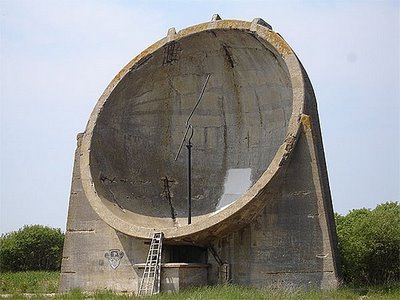Schwarz
View current page
...more recent posts
Kusama is a Japanese artist, a brilliant obsessive. Her work has been well regarded in the U.S. since the heyday of pop art. Christopher Burge, Christie's chairman, who was conducting the auction, coaxed the bidding up past four million dollars.
"It took a while. But I got there," he told the room, all avuncular charm, as the bidding resumed. "Four million nine hundred thousand … Five million dollars." There was an outbreak of clapping. "Five million one!"
At this, the final bid, the clapping became tremendous. There was cheering, and somebody hollered "Woohoo!" Clapping signifies that an artist's auction record has been broken, here for a work by a living female artist. The room pulsated with relief.
- - - - - - - - - - - - - - - - - - - - - - - - - - - - - - - - - - -
Kusama’s theme is repetition. Her ‘Air Mail Stickers’ [1962], consists of over 1,000 of the post office seals pasted onto a 181.6 x 171.5cm canvas. The inexactly-executed rows and columns in the piece - which forms part of the Whitney Museum of American Art’s permanent collection - create a dizzying trompe d’oeil. Like Kusama’s ‘Infinity Net’ and polka-dot-field work, ‘Air Mail Stickers’ anticipates Andy Warhol’s use of repetition. "After Warhol came to my ‘1,000 Boat’ show, he called to ask permission to use my patterns in his silkscreens," recounts Kusama from her Tokyo studio. "But I refused. I had been working with repetition for years by that time, ever since my 1959 exhibition at the Brata gallery." Kusama leans forward and smiles, "Warhol’s repetitions came from me - But my repetitions came from my childhood."
Can we think of the resuscitation of a particular architecture style as a lazarus taxon? The term (borrowed from the field of paleontology) describes an animal that disappears from the fossil record, only to reappear again. There are some well-known examples, such as the coelacanth and the ivory-billed woodpecker [this example is in dispute]. These animals were thought extinct, but were subsequently discovered in their respective habitats. There is plenty of scholarship out there that considers how a lazarus taxon can appear to come back from the dead.
Can we apply such an idea, especially when writing and studying architecture history? The example that comes to mind is Reyner Banham's inclusion of Russian constructivism and Italian futurism in his important Theory and Design in the First Machine Age (1960). Prior works, such as Nikolaus Pevsner's Pioneers of Modern Design: From William Morris to Walter Gropius (1936), and Henry Russell Hitchcock's Modern Architecture (also 1936) exclude Russian and Italian experiments in modernism from their own polemical narratives. Siegfried Giedion's Space, Time, and Architecture (1941) does mention Tatlin's Monument to the Third International, but placing an image of Tatlin's Tower next to the lantern of Francesco Borromini's Sant'Ivo alla Sapienza suggests an unnatural interregnum.
Imagine a graph. This graph traces the historical trajectory of a particular art form. The y-axis could be a measure of something arbitrary, something like height, weight, volume, square footage, page length .... the list can go on for ever. The x-axis is time. And somewhere at the top right-hand corner of this matrix, the trajectory plateaus. It ceases to oscillate up and down. It just continues to move forward with no qualitative change.
This is an overtly simplistic historical model, a thumbnail sketch of a thumbnail sketch. It does, however, begin to capture a controversial and provocative idea brought to light in G.W.F. Hegel's Lectures on Aesthetics (1832): that art has reached its end. Hegel's so-called "End of Art" thesis does not postulate an end to the making of art, but it does suggest that art has ceased to develop. The reason for this is complicated. It is related to Hegel's idea that as art develops from material to conceptual manifestations, it grows and declines. Like the graph mentioned above, it captures the idea that art not only has a history, but it is part of a historical process.
Modern architecture has often been cast as a strawman, a volitional agent that erased all sense of historical development of the art form. It was Norman Mailer, of all people, who cast the problem in such terms for a 1964 issue of The Architecture Forum. It is an idea that still resonates. Historian Mark Jarzombek problematizes this view in a 2007 article for Footprint, where he subjects architecture's modernity to a Hegelian crucible. Jarzombek writes:Architecture begins its life as a modern philosophical project by a series of alienations and forced detachments from its presumptive disciplinary realities, realities that have enclosed and trapped it, according to Hegel, in the narrow discourse of scholarship and ideology. Though freed to engage the philosophical, architecture is denied an ongoing role in the advancement of metaphysics, has its origins in a competing artistic medium, has a philosophical history that is not related to its empirical history, and, finally, becomes architecture at the very moment it becomes no longer relevant in the dialectic of History, namely in the shift from work to miracle. In other words, Hegel makes architecture into something one can call "not-architecture": not a real building, but an "enclosure", not an ancient building, but a "sculpture"; not a free standing production, but the appearance of one, and not a miracle of representation, but a labour that ends in a mere simulacrum (2007:35).
its only a shanty in old shanty town
paper doll
aint seen nothin

